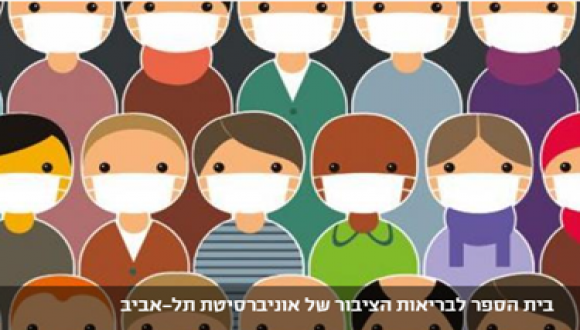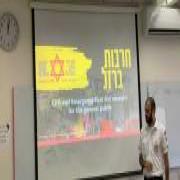דרושים סטודנטים מצטיינים במסלול תזה למחקרים בתחום המטולוגיה אונקולוגיה ילדים
פירוט נושאי המחקר נמצא מטה. לפרטים נוספים ניתן לפנות לפרופ' שי יזרעאלי sizraeli@gmail.com או פרופ' יריב גרבר yarivg@tauex.tau.ac.il
רקע
התחום של המטולוגיה אונקולוגיה ילדים מתאים במיוחד למחקרים קליניים ואפידמיולוגיים. הרוב המכריע של החולים מטופלים במסגרת פרוטוקולים ארציים, וחשוב יותר, בינלאומיים. בפרוטוקולים אלה נאסף מידע מקיף על החולים באופן פרוספקטיבי. לכן יש גישה למאגרי מידע לאומיים ובינלאומיים גדולים. חלק מהמידע הוא מעבדתי וחלק הוא קליני ולכן מתאפשר מחקר מקיף ומתקדם. המערך בשניידר מרכז חלק גדול מהפרוטוקולים האלה בארץ.
בעשור האחרון הגענו לריפוי מרבית הילדים עם גידולים סרטניים ולהתקדמות גדולה באיבחון והטיפול במחלות דם קשות. לכן הפוקוס העיקרי של המחקר עבר לשני נושאים:
1) הוא חקר הרעילות קצרת וארוכת הטווח של טיפול בילדים עם מחלות אונקולוגיות והמטולוגיות קשות. כיום זו הבעיה המרכזית בטיפול בחלק גדול מהמחלות כגון ממאירויות הדם. המיוחד בטיפול בילדים הוא שמטרה מרכזית היא שלאחר הבראתם הם יחיו חיים נורמליים ויגיעו לפוטנציאל הגנטי המכסימלי שלהם.
2) ריפוי מחלות שאיננו יכולים להן היום.
להשגת שתי המטרות יש צורך בניתוח מודרני ומעמיק של המידע שנאסף במשך השנים כדי לאפשר התאמה אישית של טיפול – להפחית טיפול רעיל במי שצפויים להבריא, לזהות את מי שעלול לפתח תופעות רעילות קשות כדי להתאים את הטיפול על מנת למנען ולזהות את החולים עם פרוגנוזה גרועה המצריכים טיפול אחר מהניתן כיום. קיום מאגרי מידע קליני ומעבדתי הוא היתרון המשמעותי שמאפשר את חקר שאלות המחקר האלה.
הנושאים המפורטים למטה הם דוגמאות למחקרים אפשריים . נושאי המחקר והמאמץ הדרוש למחקר שונים ומגוונים ולכן מתאימים לסטודנטים שונים.
לנוחות הנושאים מפורטים באנגלית:
A. Focusing on toxicities of therapies
- International “Ponte-Di-Legno (PDL)” study of patients with Acute Lymphoblastic Leukemia (ALL) that developed severe toxicity to high dose methotrexate (HDMTX).
ALL is the most common cancer in children. Currently more than 85% of the children are cured. Yet toxicity is a major problem. MTX is one of the most important drug in treatment of ALL. The administration of HDMTX is sometime associated with severe renal failure that is life endangering. Yet despite many years of usage very little is known from prospectively conducted population based studies on the risk factors and outcome for this very serious toxicity. Actually nothing is known about the toxicity prevalence in modern therapeutic protocol, its impact on survival and prognosis of the disease, the effect of severe toxicities in follow-up administration of HDMTX (most patients continue to get some form of MTX therapy as this is a critical drug for cure of ALL. The PDL group is an international consortium that include almost all the large prospective international protocols for treatment of children with ALL enrolling many thousands of patients each year. The advantage is, therefore, access to data carefully conducted international clinical trials. Studies conducted by the PDL group have led to many publications in top journals. The study is planned in two stages. An initial phase of data collection based on central registries for identification of patients and a sequential stage of detailed data collection and analysis from patients individual clinical files. Data on several hundred of patients across the Globe is expected to be collected and statistically analyzed. The study is co-chaired by our department in Schneider (Dr Shlomit Barzilai) and a Danish group. Study is expected to commence in the second half of 2019 and carried mainly during 2020. This is a large demanding and exciting project that may be suited to one or two consecutive MPH
- Treatment toxicity and outcome among children with ataxia telangiectasia and hematological malignancies - an international study
Patients with DNA breakage syndromes, such as Ataxia Telangectasia (AT) are prone for development of hematological malignancies and are especially difficult to treat since chemotherapy target the DNA. Israel is, unfortunately, a “hub” for AT. We have formed an international consortium enabling the largest collection of patients with AT and leukemia/lymphoma including up to a 100 patients. The pattern of disease and toxicities could be compared with those of “standard” patients with the same diagnosis treated on our international protocols. - Risk factors and characterizations of metabolic syndrome in patients treated for ALL.
Metabolic syndrome consisting of hyperlipidemia, obesity, type II Diabetes and hypertension is one of the long term toxicity of treatment of ALL, probably due to steroids. There is also an acute metabolic syndrome developing during therapy but it is presently unclear if the acute events occurring during therapy predict the long term toxicity. The study will explore prospectively collected clinical and laboratory data on our patients diagnosed with ALL since 2000 and followed at least five years in our follow-up clinic. - Iron overload and its toxicities in children cured from cancer
Iron overload is a major cause of cardiac and liver failure , Diabetes and other diseases in patients who received multiple blood transfusions or (mostly in northern Europeans) in patients that suffer from iron accumulation due to hemochromatosis. Children with cancer receive many blood transfusions during the period of treatment. This is a particular sensitive period in children due to organ growth and development. Yet very little is known about the extent of iron overload and its significance. Ferritin levels, the major iron storage protein, are measured routinely and are used as routine screening for iron overload. MRIs to evaluate iron deposition in target organs are performed in those patients with suspected iron overload based on Ferritin levels. The co-existence of large databases on cohorts of cancer patients in our department coupled with consecutive measurements of ferritin and complete records of transfusion enable, for the first time, the possibility for a large comprehensive study to examine the extent and significance of iron overload, it dependencies on transfusions, autologous bone marrow transplantation and on the different types of cancers. - Comparison of therapeutic iron chelation regimens in transfusion dependent beta thalassemia: effectiveness in controlling iron overload and adverse events/side effects.
Like other Mediterranean countries Thalassemia is relatively common in Israel. It is the “hallmark” disease with iron overload. Iron overload is a major cause for morbidity and mortality of these patients. Iron chelation is, therefore, a major part of therapy in addition to blood transfusion. In the recent decade novel therapies for iron chelation have developed. The goal of this study of a cohort of closely followed patients is to document the practical effectiveness, side effects and compliance of these various modern iron chelation therapies.
- Pattern of secondary malignancies after therapy of a primary solid tumors in Israel Secondary cancers are one of the major long-term toxicities of chemo-radiotherapies. They may be also caused by a genetic predisposition to cancer. The two factors (treatment and genetics) may synergize in increasing the risk for secondary cancers. Israel is enriched with genetic diseases, but it is quite likely that many of the cancer predisposition syndromes are missed due to lack of attention of physicians and patients or the (small) size of the families. This is a data based study crossing several registries with hospital records to determine the prevalence and risk factors for this devastating complication.
- The dynamics of Systemic bacterial and fungal infections in pediatric cancer patients
Infections are leading cause of therapy associated mortality and morbidity. There is an impression of a substantial increase in frequency, severity and drug resistance of such infections in recent years. The goal of this study is to compare the recent decade to the previous one, merging data on infections with cancer diagnostic and therapy - The incidence and natural history of Glomerular disease and Transient Thrombotic Microangiopaty (TMA) in pediatric patients after hematopoietic stem cell transplantation (HSCT)
TMA is a common, serious and sometimes fatal complication of HSCT (bone marrow transplant) occurring within the first 100 days after transplant and causing kidney and multi-organ failure associated with a typical blood morphology of microangiopathic anemia. However its natural history is unknown. This is a proposal for a prospective study of TMA if patient undergoing HSCT. Study is expected to include about 40 patients per year.
- A study under early conceptual development: Population based large data analysis of electronic records to study the long-term outcome and toxicity of children diagnosed with cancer.
Most of the studies of long term effects (e.g. – secondary cancers, endocrine, cardiac and other organ related diseases, etc) are based on patients followed in long term clinics. These are biased since they are based on a selective population. The existence of Electronic Medical Records in the Israeli HMOs allow, theoretically, a population based study. Theoretically this will provide a unique resource that exists only in few countries. We are currently testing the potential feasibility of such a study
B. Other studies of cancer and hematological diseases
- The seasonality of birth of patients with pediatric malignancies
Childhood cancer (at least during the first decade of life) is probably almost always a fetal disease – the first mutational driven expansion of a precancerous clone occur already during pregnancy. Only a fraction of children born with an asymptomatic/undiagnosed pre-leukemia (or pre-cancer) will develop cancer. It is unclear if these mutations are simple an “accident” or if they are affected by the environment. A prevailing hypothesis is that infections during pregnancy or perinatal may promote such event. Based on some preliminary evidence in other “immune” disorders (e.g. type I Diabetes) we aim at examining the hypothesis that there might seasonality in birth dates in patients with pediatric malignancies in general and with acute lymphoblastic leukemia (ALL) in particular in which the infectious hypothesis has the strongest epidemiologic evidence. Data will be analyzed from the national pediatric cancer studies and will be compared with the national birth data. We are also currently collecting feces for microbiome studies from children with ALL and their families at the time of diagnosis. In the future, analysis of this microbiome could be linked to the initial data collection on the seasonality of birth and of the time of diagnosis of ALL - Coagulation related research:
- Is there a need to investigate for familial genetic hypercoagulability syndrome in children with provoked Deep Vein Thrombosis (DVT)?
The diagnosis of hypercoagulability genetic syndromes has substantial implications. While the diagnostic workup is indicated in children with spontaneous unprovoked DVT, there is no consensus regarding DVT that occurs as a secondary event due to intravenous catheter, mastoiditis, prolonged bed rest etc. The question is especially relevant in Israel since we have populations (e.g. Arabs) with high prevalence of genetic hypercoagulability. As in Schneider each patient with DVT (provoked on unprovoked) is genetically studied for these syndromes, the data collected over a decade can provide diagnostic guidelines. - What is the significance of Factor VII deficiency?
Factor VII deficiency is one of the commonest coagulation defects accidently diagnosed during routine pre-surgical coagulation tests. While often not associated with bleeding severe deficiency may cause bleeding. The true prevalence of bleeding, surgical complications and adherence to prophylactic therapy in children is unknown. Given that all tests are done in a central lab in Rabin Medical Center, there is a database enabling a retrospective study combining lab with clinical electronic records.
- Is there a need to investigate for familial genetic hypercoagulability syndrome in children with provoked Deep Vein Thrombosis (DVT)?
- Cannabis for children with cancer – a national retrospective and prospective study.
This study will be led by Dr Pesach Schwartzman; the Schneider PI will be Dr Gil Gilad. It will include a prospective and retrospective national survey of Pediatric Oncologists prescribing Cannabis and the parents of children with cancer who received these prescription. This will be the first population based study of the effects of cannabis and the practice of cannabis administrations to children with cancer. - Characterization of patients with primary resistant Hodgkin Disease – an international study
Hodgkin lymphoma is one of the most curable cancers. Even relapses are curable. Very rarely, however, there is resistance of the primary disease to multiple lines of therapy. Since Israel is part of a European protocol that has accrued thousands of patients and Schneider is leading the national study, vast data is collected prospectively and verified centrally. The goal would be, through case-control study, to identify predictors and characteristics of primary resistance. Biological data including analysis of circulating DNA will be collected in parallel. This study is still under development and will not ready for a student before 2020.




